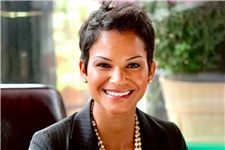Last year, in the wake of George Floyd’s death, the black square on Instagram became a virtue signal of solidarity by brands, corporations, and influencers in support of a nationwide fight for Black lives. But a year later as we look back at the hundreds of corporate entities who posted Black squares on Instagram, many without any real strategy or action plan for how they create institutional change, you’ll find that the black square was nothing more than a promise to continue with the status quo.
But thankfully, not them all. In the wake of this tragedy, United’s CEO and President put a stake in the ground to be part of the solution and take action against racism in support of reconciliation. Since then, United’s focus has been on making structural changes that move the airline toward its goal of being the most inclusive airline in the industry. Building on an already rich history of industry firsts in diversity, equity and inclusion like – the first Black President, the first Hispanic CEO and the first female Board Chair – the premiere airline adopted a “proof, not just promises” philosophy. It is a philosophy to demonstrate its commitment through actions – a strategic approach with truly impactful initiatives that make them committed to bring a better airline for its customers, employees and all the communities that they serve.
In this interview with ESSENCE, United Airlines’ Chief Diversity Equity and Inclusion Officer, Jessica Kimbrough, discusses the airline’s path forward and its commitment to fighting for equity in the airline industry.
Looking back a year later on the death of George Floyd and subsequent protests which publicly held not only law enforcement, but corporate entities accountable for lack of diversity, and racist systems, what has United been able to accomplish?
In the last year, we put into place a structure to support United’s long-term commitment to diversity, equity and inclusion. Specifically, we created the United Executive Council on Diversity, Equity and Inclusion – comprised of 12 executive team members including the CEO and chaired by the President, the group serves as a strategic catalyst for change. The Council shapes our DEI strategy, removes barriers to progress, and promotes an inclusive, informed, understanding environment for our employees and customers.
We created United’s We Stand United Collaborative Action Team – a cross-functional team of leaders across United that serves as the engine for developing and executing on our diversity, equity and inclusion strategy on behalf of our key stakeholders — employees, customers, communities and commercial partners — to create real, impactful, sustainable change within the company and in the communities where we work, live and fly. The We Stand United Collaborative Action Team works collaboratively with a diverse group of over 100 corporate and operational team members from across the enterprise to build and execute on our strategy.
We formalized mentoring programs to support and help retain Black executives. Offered community outreach programs that offer scholarships to underrepresented students. We also increased support to a broader base of nonprofit partners like Public Allies, New Jersey Institute of Social Justice, Houston Area Urban League, Delta Institute, Liberty Hill and the Institute for Justice Clinic on Entrepreneurship with a shared vision of fighting racism and creating opportunities for the underrepresented.
In recent months we have developed a DEI public policy platform. Along with a set of public policy priorities that United will advocate for in support of our broader DEI goals, we have gathered input from within the company as well as from external stakeholders including legislators, policy experts, and non-profits and NGOs to create six primary policy areas that we will lead on non-discrimination, criminal justice reform, increasing women, the underrepresented, and people with disabilities with opportunities to join the workforce, and in aviation and STEM careers in particular, voting rights, climate justice, and supplier diversity.
What is the strategic plan over the next 5-10-15 years to ensure that there continues to be equitable solutions for all? Where do we go from here?
Moving ahead we will formalize how we measure our progress in DEI using a data-driven approach just as we measure other business imperatives. This includes the Executive Council on Diversity Equity and Inclusion, led by President Brett Hart has instituted quarterly reviews of performance on; Talent Dashboards – reviewing representation in recruiting, retention and advancement of women and the underrepresented to ensure we fully reflect the diversity of the communities we serve and; Business Diversity Dashboards – United’s commitment to DEI extends from our workforce and continues in our relationships with our suppliers. Reviewing our use of underrepresented owned businesses ensures our supply chain also reflects the diversity of the communities we serve.
This interview has been edited for length and clarity.
Source: Read Full Article
